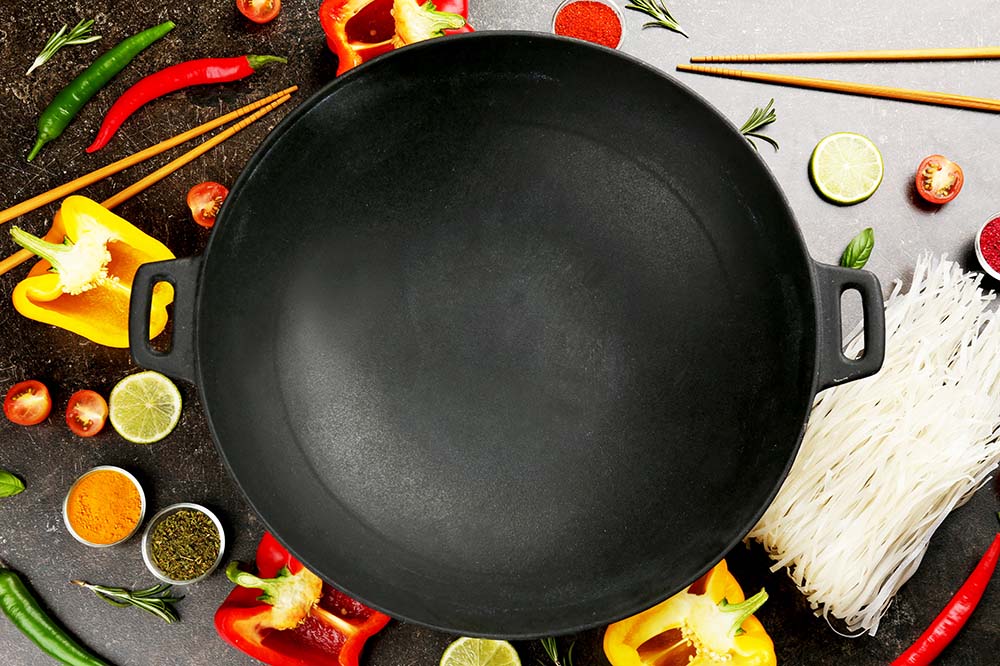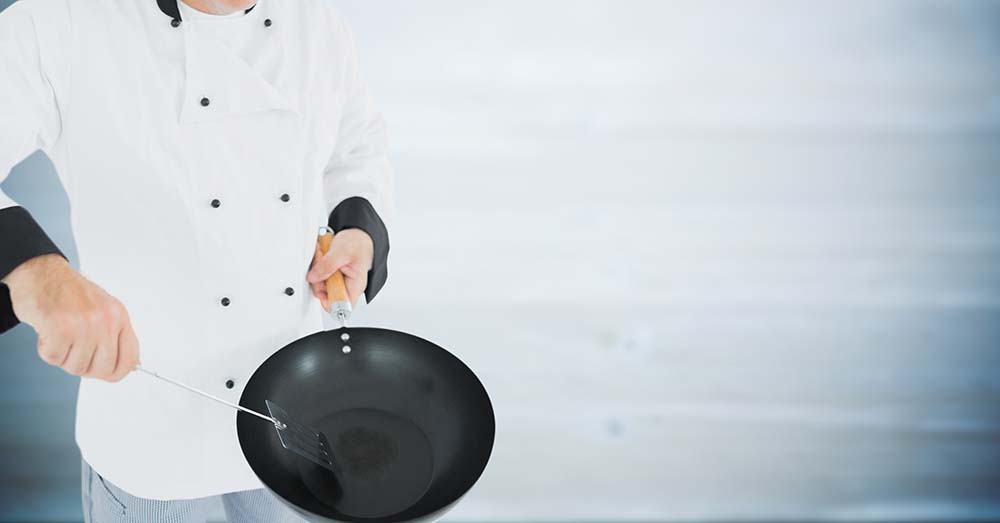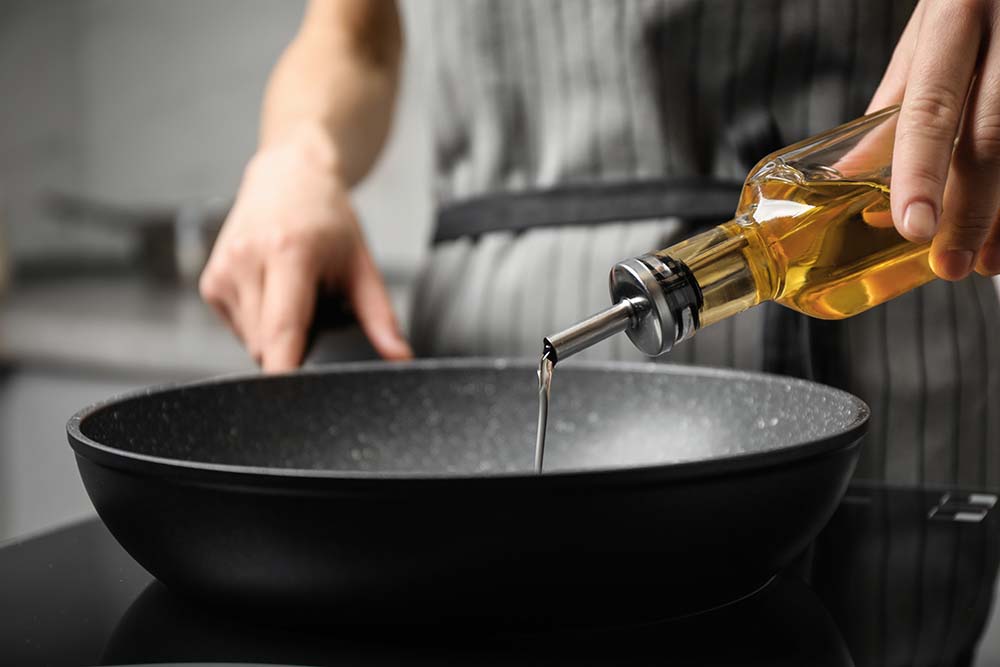As a new proud owner of a heavy, yet sturdy cast iron wok, you are eager to jump into action and whip out a few biryanis or other Asian stir fry dishes that require high heat application. Yet, you have read somewhere that using cast iron needs seasoning. And you start wondering: what is this seasoning, and what does it means to season a wok? This article will tell you how to season your cast iron wok.
The basics of using a cast iron wok
First of all, let’s discuss why one would even use cast iron vis-a-vis stainless steel or carbon steel woks. Cast iron woks, like any cast iron pans, have earned the love and admiration of chef and amateur alike for their excellent heat conductivity, durability, ease of use and sturdiness. In fact, they are so sturdy and simple to use that it is a well-known fact that some families pass their cast ironware from generation to generation. If taken care of properly, they can literally last you a lifetime.
Cast iron woks are a close relative of an Asian cast iron cauldron that is widely used to this day throughout East and Central Asia, as well as in traditional cuisines of Europe. In Asian cuisine, cast iron woks and cauldrons have been used to both quickly stir fry and to more slowly stew using a more traditional, over the fire, yet stationary techniques.
This material has seen resurgence in recent decades to its many benefits, including the ‘cool’ factor. It is a lot more impressive to show off your cooking skills with cast iron instead of non-stick skillet.
Cast iron has been traditionally made by adding steel, and other chemicals to pure blocks of iron to increase the carbon content of the resulting alloy. This provided the material with extra hardiness, while increasing its weight many-fold. However, one drawback that is inherent to using more iron-rich cookware is rust. And to avoid rust, you need to season your wok.
Why is seasoning so important?

When I ask you to season a wok, I do not ask you to start putting salt and pepper on it. What we need is to create a non-stick surface that, in addition to being helpful for cooking, will simultaneously help you avoid rust and use your wok forever.
In this case, seasoning means baking oil molecules into the naturally porous molecular structure of cast iron. Cooking oil needs to be heated enough to pass its smoking point to begin, well, smoking or burning. Carbonization is a fancy term for burning something, and this means that more carbon molecules – the product of burning the oil – bind themselves to the cast iron alloy molecules that spread out when heat is applied. As it cools, carbon forms a protective outer layer on the surface of your cast iron wok.
How to season your wok for the first time
Some modern-day cast iron woks come factory pre-seasoned. Please do not start cooking immediately after you unpack your wok, as who knows how clean the factory packing was. Instead, I recommend following a simple yet effective first-time seasoning method. That same method works wonders for other woks that arrive au naturel.
Step 1: Wash
Once you are done the unpacking and admiring the natural beauty of your new wok, you should immediately wash the cooking surface with hot water and dish soap. Take care not to use too much soap, as it may damage the pan. Now, chefs argued that last claim back and forth, and I personally have used soap with cast iron without witnessing any damage, but let’s err on the side of caution and use mildly soapy water.
Scrub it thoroughly with an abrasive brush but take care not to use steel sponges as they will create unwanted grooves in the smooth surface of the wok.
Step 2: Dry
After washing, dry it completely with a paper towel or otherwise. I found that one of the best methods is to simply set it over the stove and let the heat do its job, since the heating step is the next one to follow anyway. Heating the wok will also start the seasoning process.
Step 3: Pre-season
Heat the wok until it’s very hot. You will see smoke coming off it. Since cast iron does not heat uniformly immediately, allow some time to pass after you set it on the stove. Anywhere between 5 and 10 minutes should do the trick.
Once it’s screeching hot, add enough oil to cover the bottom of the wok, although the layer does not need to be deep. Just enough to provide a layer. The oil will start smoking, so you can turn off the heat and rub the oil all over the working surface of the wok with paper towel. Wait until it cools off to a manageable level, wipe off the surface again with a paper towel to remove the unwanted burned particles that remained on the surface.
Step 4: Season
You should repeat the process a few times (some recommend up to 5) to ensure that the patina that has formed on the surface of the wok completely sets. Your wok has been officially seasoned!
An alternative way of heating is using your oven rather than stove to ‘bake’ the oil, but I found that both methods work equally well.
How to maintain your wok between meals

Once the protective patina has formed, it will remain there unless the wok is washed between uses. Which, of course, you should do for common sense health reasons. And I don’t mean it sarcastically: some people – including yours truly – really like all that beautiful, aromatized fat that resulted from frying bacon or duck breast with herbs and garlic to remain in the wok to dramatically improve the flavor of your next meal.
Regardless, when the wok is ready to be washed, you need to remember that some of that out layer will need replenishing. It is very simple, if you followed the advice from the previous section and used mild soapy water and an abrasive scrub. From there, the process is exactly like your first seasoning procedure. Except you don’t need to repeat it again and again as once will suffice. This time, you don’t need to remove the whatever industrial gunk resided on your wok that came fresh from the factory floor.
Best oils to use for seasoning your wok

Lastly, I have a word of advice on what oil you should use when seasoning your cast iron cookware, including your wok. As I mentioned earlier, a good seasoning vegetable oil should have a pretty high smoke point and should have a relatively neutral taste. A strong-tasting oil, even when baked into the thin layer of cast iron, will interfere with a taste profile of the next dish you will cook.
I will list a few neutral-tasting, high-smoke point oils below:
- Grapeseed oil: Grapeseed oil has a pretty high smoke point of up to 450° F / 232° C, and has a nice, fresh taste. Try this oil to season your wok.
- Canola oil: This versatile oil is noted for its neutral flavor as well as a relatively high smoke point of 400F/ 205C.
- Avocado oil: Good avocado oil has a very high smoke point of 570° F / 271° C. But Avocado Oil can impart a flavor and is a bit stickier than other oils.
- Peanut oil: It has a very high smoke point of around 450° F / 232° C and is a great choice for wok cooking.
Whatever oil you choose, it should be expeller-pressed and refined. Even the most naturally neutral tasting oil will still have the traces of the natural taste of its origin unless it has been refined. Thus, the unrefined avocado oil will have a naturally ‘grassy’ taste, the peanut oil will leave a ‘nutty’ aftertaste, etc. So, unless this is the note you are looking for in your next dish, go refined!
Last, but not least
Just like a cast iron skillet or other type of cast iron pans, cast iron woks are an excellent addition to your home kitchen and can add culinary and aesthetic value to your cooking for a lifetime of enjoyment – all for a fraction of a price. They do require a bit more of your love and care but, I promise you, it is well worth the time and the effort you will put into seasoning and maintenance. And once you learn how to do it, it will be just as easy and natural for you to do as pre-washing your dishes before you put them into a dishwasher. That being sad, of course, you should not under any circumstance attempt to introduce your cast iron cookware into dishwasher.
